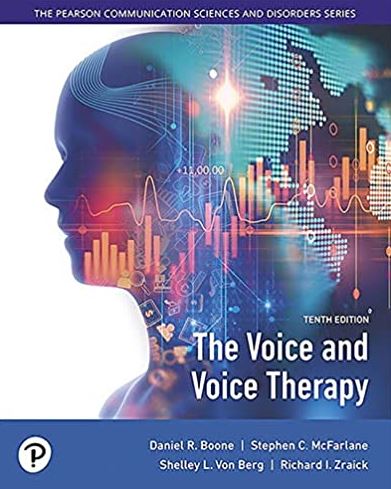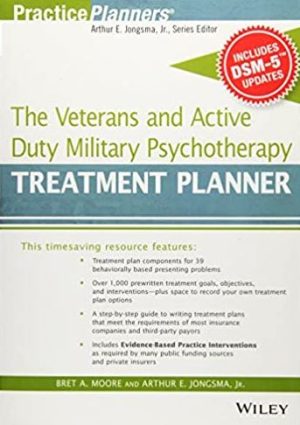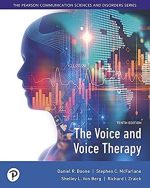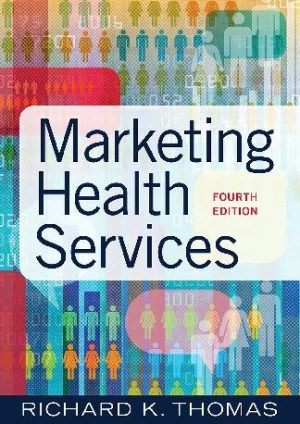The Voice and Voice Therapy 10th Edition by Daniel Boone, ISBN-13: 978-0134894485
[PDF eBook eTextbook]
- Publisher: Pearson; 10th edition (April 18, 2019)
- Language: English
- 384 pages
- ISBN-10: 0134894480
- ISBN-13: 978-0134894485
The Voice and Voice Therapy incorporates the most current scientific evidence from a variety of disciplines that supports the behavioral approaches to voice assessment and intervention. Well-written, with meaningful applications and helpful pedagogy, the book is accessible and relevant to students, instructors, and clinicians.
voice and voice therapy 10th edition PDF, includes nearly 500 new references representing advances in the field; updated topics and discussions; and new and improved pedagogical elements to ensure that students, instructors, and clinicians have the most current voice and voice-related disorders resource available.
Table of Contents:
1. Welcome
A. Welcome
B. Copyright
C. Dedication
D. In Memoriam
E. About the Authors
F. Contents
G. Preface
H. Acknowledgments
I. Prologue
2. 1: An Introduction to Voice Disorders and Their Management
A. Introduction: An Introduction to Voice Disorders and
Their Management
B. The Biological Function of the Larynx
C. The Emotional Function of the Larynx
D. The Linguistic Function of the Voice
E. Prevalence of Voice Disorders in the General Population
F. Prevalence of Voice Disorders in Special Populations
1. Prevalence of Voice Disorders in SLPs and Future
SLPs
G. Kinds of Voice Disorders
1. Organic Voice Disorders
H. Management and Therapy for Voice Disorders
I. Summary
3. 2: Normal Voice
A. Introduction: Normal Voice
B. Normal Aspects of Voice
C. Normal Processes of Voice Production
D. The Respiratory System
E. Structures of Respiration
1. The Inspiratory Muscles
F. Control of Breathing
G. The Respiratory Cycle (Inhalation and Exhalation)
H. Respiratory Volumes and Capacities
I. The Effects of Aging on the Respiratory System
J. Breathing for Life Versus Breathing for Speech
K. The Phonatory System
L. Anatomy of Phonation
1. Extrinsic Laryngeal Ligaments and Membranes
2. Intrinsic Laryngeal Ligaments and Membranes
3. The Ventricular (False) Vocal Folds
4. Nervous System Control of the Larynx
M. Voice Production
1. Voice Registers
2. How We Change Vocal Quality
N. Resonance
O. Structures of Resonance
P. Mechanism of Resonance
Q. Summary
4. 3: Functional Voice Disorders
A. Introduction: Functional Voice Disorders
B. Excessive Muscle Tension Disorders
C. Benign Pathologies Resulting from Excessive Muscle
Tension Disorders
1. Vocal Fold Polyps
D. Voice Characteristics with Excessive Muscle Tension
Disorders
E. Psychogenic Voice Disorders
1. Functional Dysphonia
F. Summary
5. 4: Organic Voice Disorders
A. Introduction: Organic Voice Disorders
B. Congenital Abnormalities
C. Acid Reflux Disease
D. Contact Ulcers (Granulomas)
E. Cysts
F. Endocrine Changes
G. Hemangioma
H. Hyperkeratosis
I. Infectious Laryngitis
J. Leukoplakia
K. Recurrent Respiratory Papillomatosis
L. Pubertal Changes
M. Sulcus Vocalis
N. Webbing
O. Laryngeal Cancer
P. Summary
6. 5: Neurogenic Voice Disorders
A. Introduction: Neurogenic Voice Disorders
B. A Working View of the Nervous System
C. The Central Nervous System, the Cortex, and Its
Projections
1. Neurotransmitters
D. The Peripheral Nervous System (PNS)
E. Conditions Leading to Neurogenic Dysphonia
F. Vocal Fold Paralysis
1. Medical Management of UVFP
G. Spasmodic Dysphonia (SD)
1. Voice Therapy for SD
H. Essential Voice Tremor
I. Differences Between SD, Essential Voice Tremor, and
Muscle Tension Dysphonia
J. Parkinson’s Disease (PD)
K. Cerebrovascular Accident (CVA)
L. Traumatic Brain Injury
M. Summary
7. 6: Evaluation of the Voice
A. Introduction: Evaluation of the Voice
B. Screening for Voice Disorders
C. Medical Evaluation of the Voice-Disordered Patient
D. Review of Auditory and Visual Status
E. Case History
F. Behavioral Observation
G. Auditory-Perceptual Ratings
H. The Oral-Peripheral Mechanism Examination
I. The Clinical Voice Laboratory
J. Acoustic Analyses and Instrumentation
1. Frequency Variability
2. Vocal Perturbation Measures
K. Electroglottographic Analysis and Instrumentation
L. Aerodynamic Measurements and Instrumentation
1. Laryngeal Resistance
M. Phonatory–Respiratory Efficiency Analyses and
Instrumentation
N. Voice Dosage Analysis and Instrumentation
O. Case Studies
1. Case Study 1: MTD in An Older Female
2. Case Study 2: Vocal Nodules in a Young Male
3. Case Study 3: Differential Diagnosis of Dysphonia
in an Adolescent with a Complex Medical History
P. Summary
8. 7: Voice Facilitating Approaches
A. Introduction: Voice Facilitating Approaches
B. Patient Compliance and Emerging Technologies in Voice
Intervention
C. Voice Facilitating Approaches
1. 2. Change of Loudness
2. 3. Chant-Talk
3. 5. Confidential Voice
4. 6. Counseling (Explanation of Problem)
5. 8. Elimination of Abuses
6. 10. Focus
7. 11. Glottal Fry
8. 13. Hierarchy Analysis
9. 15. Laryngeal Massage
10. 17. Nasal-Glide Stimulation
11. 20. Redirected Phonation
12. 21. Relaxation
13. 23. Tongue Protrusion /i/
14. 25. Yawn-Sigh
D. Summary
9. 8: Therapy for Special Patient Populations
A. Introduction: Therapy for Special Patient Populations
B. Voice Therapy for Particular Populations
1. Pediatric Voice Problems
2. Professional Voice Users
3. Deaf and Hard of Hearing
C. Voice Therapy for Respiratory-Based Voice Problems
1. Paradoxical Vocal Fold Movement
D. Summary
10. 9: Management and Therapy Following Laryngeal Cancer
A. Introduction: Management and Therapy Following
Laryngeal Cancer
B. Risk Factors, Incidence, and Demographics in Head and
Neck Cancer
C. Historical Review of Laryngeal Cancers
D. Modes of Cancer Treatment
E. Case Examples
F. Voice Facilitating Approaches
G. Vocal Hygiene
H. Laryngectomy
I. Tumor Staging
J. Surgical Advances and Organ Preservation Protocols
K. Preoperative Counseling
L. Postlaryngectomy Communication Options
M. The Artificial Larynx
N. Esophageal Speech (ES)
O. Tracheoesophageal Puncture (TEP)
P. Overview of the Pharyngoesophageal (PE) Segment
Q. Summary
11. 10: Resonance Disorders
A. Introduction: Resonance Disorders
B. Resonance Defined
C. Disorders of Nasal Resonance
D. Evaluation of Nasal Resonance Disorders
1. Stimulability Testing
E. The Oral Examination
F. Laboratory Instrumentation
G. Treatment of Nasal Resonance Disorders
1. Prosthetic Treatment of Hypernasality
2. Hyponasality
H. Therapy for Oral-Pharyngeal Resonance Problems
I. Summary
12. References
A. References
13. Video and Interactive Resources
A. Video and Interactive Resources
14. Print Version
A. Print Version
Daniel R. Boone, late of the University of Arizona, celebrated 60-plus years as a speech-language pathologist with the drafting of the 10th edition of The Voice and Voice Therapy. Dr. Boone held professorships at Case Western Reserve University, University of Kansas Medical Center, University of Denver and the University of Arizona, where he is professor emeritus.
Dr. Boone was a former president of the American Speech-Language-Hearing Association (ASHA) and held both a Fellowship and the Honors of that organization. He was the author of over 100 publications and was well known nationally and internationally for his many workshop presentations. Dr. Boone served as a consultant to the Parkinson Voice Project in Dallas, TX from 2011 to 2018. Dr. Boone will be remembered for his love of his students and turning them on to the excitement of clinical voice practice.
Stephen C. McFarlane is professor emeritus at the School of Medicine at the University of Nevada, Reno. He was awarded the ASHA Fellowship in 1982 and ASHA honors in 1999. He received his BS and MS degrees from Portland State University and his PhD degree from the University of Washington.
Dr. McFarlane has a long history of research interests in the area of voice disorders. Study of the outcomes from voice therapy and the development of new treatment techniques are of particular interest. His scholarly work has been drafted in dozens of books and journals, among them Seminars in Speech and Language; American Journal of Speech Language Pathology, Phonoscope; and Current Opinion in Otolaryngology & Head and Neck Surgery.
Shelly L. Von Berg teaches, practices and researches in the areas of voice, dysphagia and motor speech disorders in adults and children in the Department of Communication Sciences and Disorders at the California State University, Chico, where she holds the rank of Professor.
Richard I. Zraick holds the rank of Professor and is the Director of the School of Communication Sciences and Disorders at the University of Central Florida. He was awarded the ASHA Fellowship in 2014. He earned his doctorate at Arizona State University.
Dr. Zraick is a clinician and teacher-scholar with over 30 years of experience in clinical practice and academia. His scholarship focuses on voice disorders, speech and voice perception, interprofessional education, healthcare simulation, and health communication. He regularly speaks about these topics at state, regional and national scientific and professional conventions.
What makes us different?
• Instant Download
• Always Competitive Pricing
• 100% Privacy
• FREE Sample Available
• 24-7 LIVE Customer Support









Reviews
There are no reviews yet.